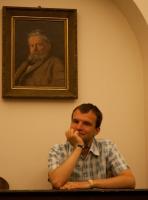Misc,
Structure and Time-Evolution of an Internet Dating Community
(2002)cite arxiv:cond-mat/0210514Comment: to appear in Social Networks.
DOI: 10.1016/j.socnet.2004.01.007
Abstract
We present statistics for the structure and time-evolution of a network
constructed from user activity in an Internet community. The vastness and
precise time resolution of an Internet community offers unique possibilities to
monitor social network formation and dynamics. Time evolution of well-known
quantities, such as clustering, mixing (degree-degree correlations), average
geodesic length, degree, and reciprocity is studied. In contrast to earlier
analyses of scientific collaboration networks, mixing by degree between
vertices is found to be disassortative. Furthermore, both the evolutionary
trajectories of the average geodesic length and of the clustering coefficients
are found to have minima.
